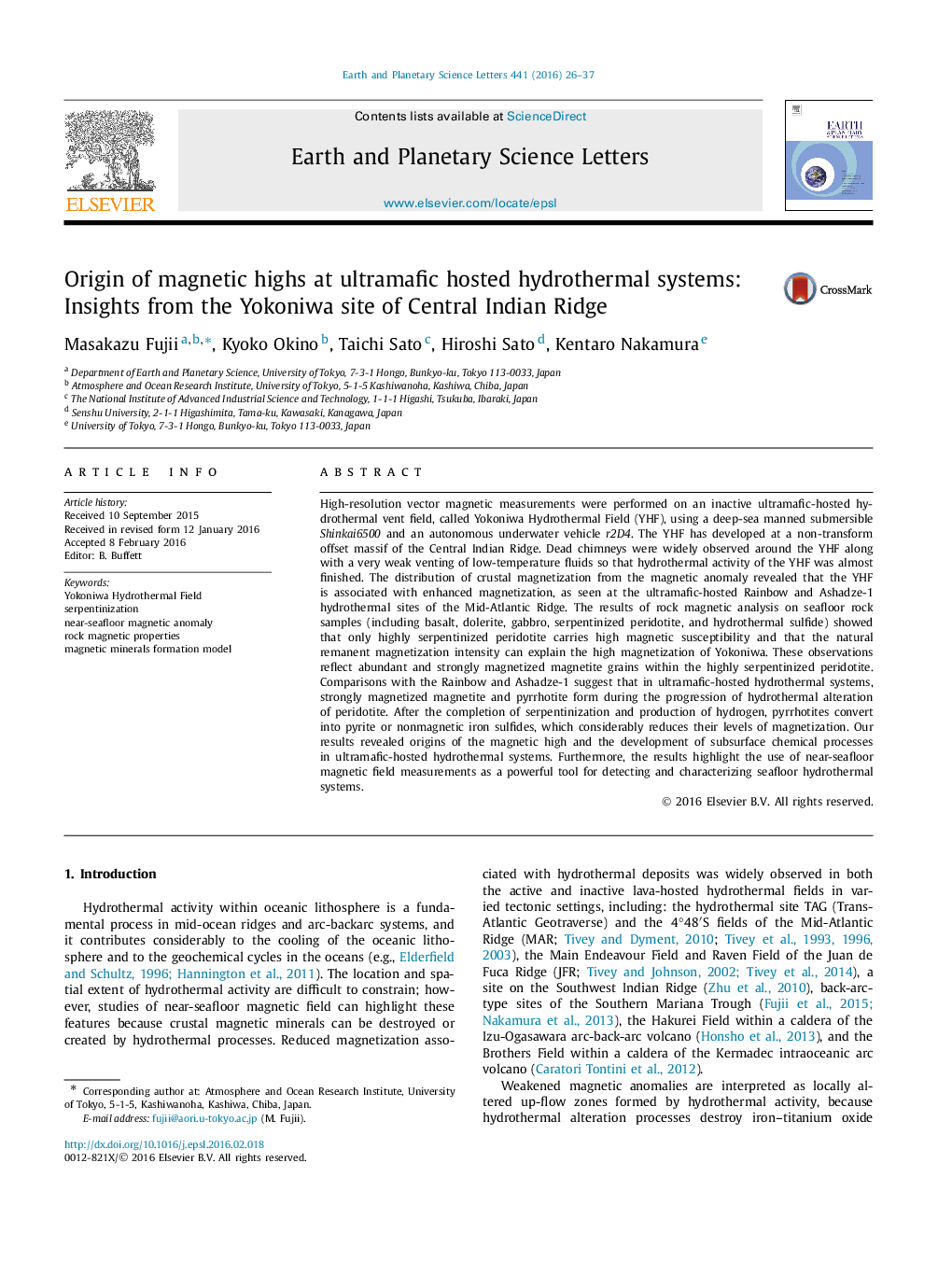| Article ID | Journal | Published Year | Pages | File Type |
|---|---|---|---|---|
| 6427510 | Earth and Planetary Science Letters | 2016 | 12 Pages |
Abstract
High-resolution vector magnetic measurements were performed on an inactive ultramafic-hosted hydrothermal vent field, called Yokoniwa Hydrothermal Field (YHF), using a deep-sea manned submersible Shinkai6500 and an autonomous underwater vehicle r2D4. The YHF has developed at a non-transform offset massif of the Central Indian Ridge. Dead chimneys were widely observed around the YHF along with a very weak venting of low-temperature fluids so that hydrothermal activity of the YHF was almost finished. The distribution of crustal magnetization from the magnetic anomaly revealed that the YHF is associated with enhanced magnetization, as seen at the ultramafic-hosted Rainbow and Ashadze-1 hydrothermal sites of the Mid-Atlantic Ridge. The results of rock magnetic analysis on seafloor rock samples (including basalt, dolerite, gabbro, serpentinized peridotite, and hydrothermal sulfide) showed that only highly serpentinized peridotite carries high magnetic susceptibility and that the natural remanent magnetization intensity can explain the high magnetization of Yokoniwa. These observations reflect abundant and strongly magnetized magnetite grains within the highly serpentinized peridotite. Comparisons with the Rainbow and Ashadze-1 suggest that in ultramafic-hosted hydrothermal systems, strongly magnetized magnetite and pyrrhotite form during the progression of hydrothermal alteration of peridotite. After the completion of serpentinization and production of hydrogen, pyrrhotites convert into pyrite or nonmagnetic iron sulfides, which considerably reduces their levels of magnetization. Our results revealed origins of the magnetic high and the development of subsurface chemical processes in ultramafic-hosted hydrothermal systems. Furthermore, the results highlight the use of near-seafloor magnetic field measurements as a powerful tool for detecting and characterizing seafloor hydrothermal systems.
Related Topics
Physical Sciences and Engineering
Earth and Planetary Sciences
Earth and Planetary Sciences (General)
Authors
Masakazu Fujii, Kyoko Okino, Taichi Sato, Hiroshi Sato, Kentaro Nakamura,
